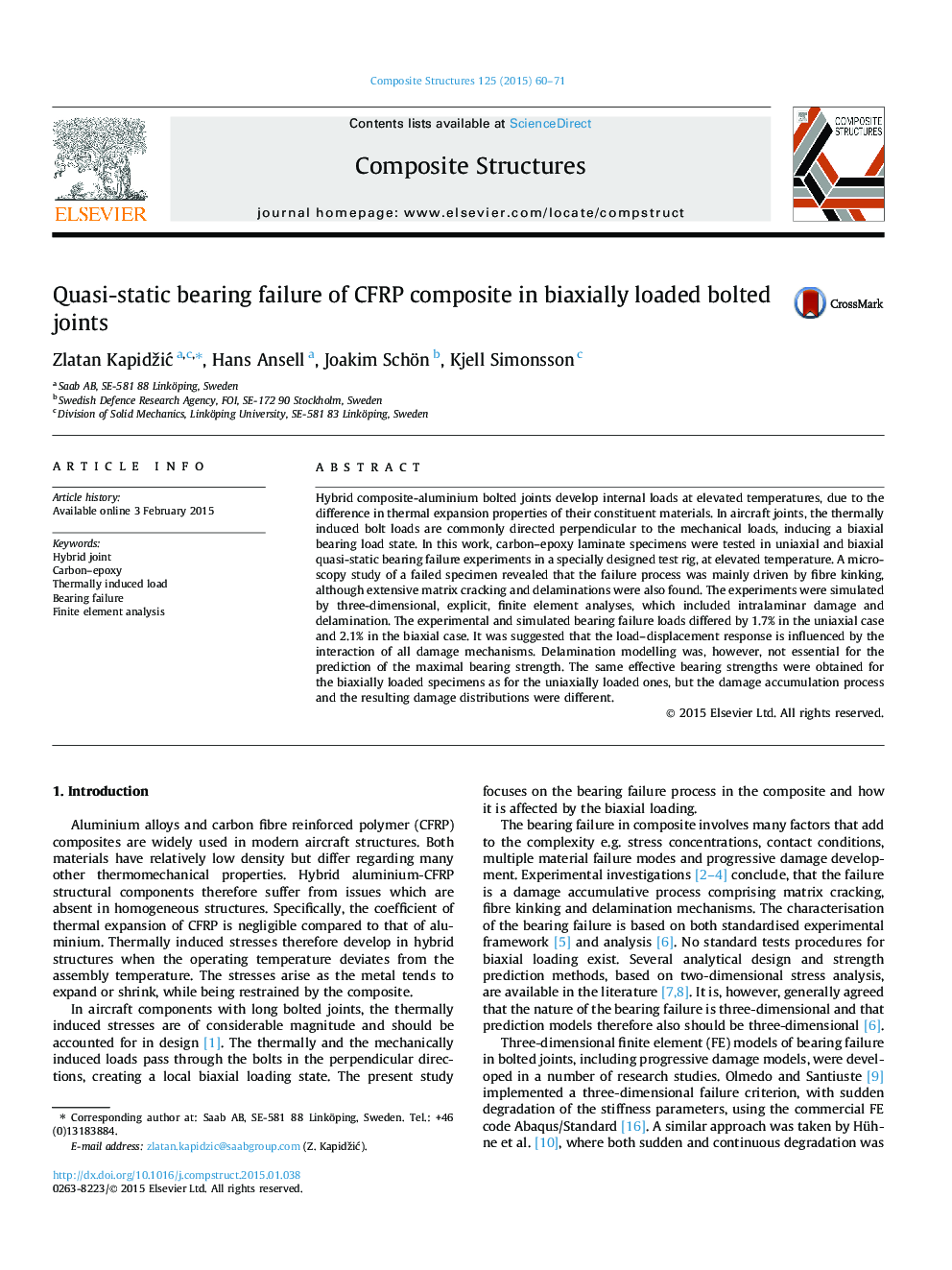| Article ID | Journal | Published Year | Pages | File Type |
|---|---|---|---|---|
| 6706808 | Composite Structures | 2015 | 12 Pages |
Abstract
Hybrid composite-aluminium bolted joints develop internal loads at elevated temperatures, due to the difference in thermal expansion properties of their constituent materials. In aircraft joints, the thermally induced bolt loads are commonly directed perpendicular to the mechanical loads, inducing a biaxial bearing load state. In this work, carbon-epoxy laminate specimens were tested in uniaxial and biaxial quasi-static bearing failure experiments in a specially designed test rig, at elevated temperature. A microscopy study of a failed specimen revealed that the failure process was mainly driven by fibre kinking, although extensive matrix cracking and delaminations were also found. The experiments were simulated by three-dimensional, explicit, finite element analyses, which included intralaminar damage and delamination. The experimental and simulated bearing failure loads differed by 1.7% in the uniaxial case and 2.1% in the biaxial case. It was suggested that the load-displacement response is influenced by the interaction of all damage mechanisms. Delamination modelling was, however, not essential for the prediction of the maximal bearing strength. The same effective bearing strengths were obtained for the biaxially loaded specimens as for the uniaxially loaded ones, but the damage accumulation process and the resulting damage distributions were different.
Related Topics
Physical Sciences and Engineering
Engineering
Civil and Structural Engineering
Authors
Zlatan KapidžiÄ, Hans Ansell, Joakim Schön, Kjell Simonsson,
